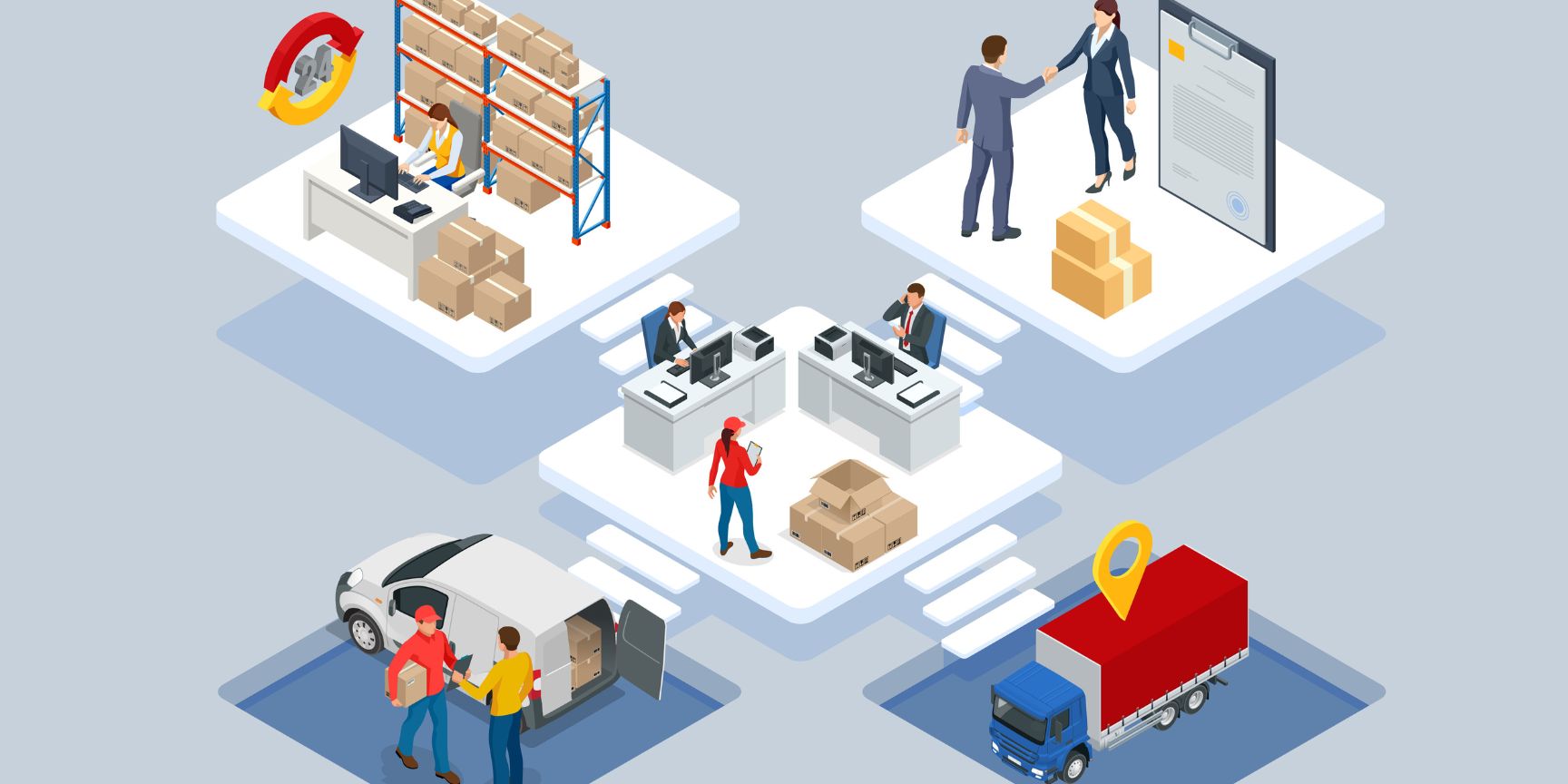
Logistics
Table of Contents
How logistics increases company success and customer satisfaction
Logistics is of central importance for companies, as it plans, implements and controls the flow of materials and information. The various areas of logistics include procurement, production, distribution, return, disposal, service and innovation logistics. Efficient logistics increases customer satisfaction, optimises costs and creates competitive advantages. With the help of LAGERflache.de, successful companies use innovative strategies to demonstrate how efficiency and customer service can be improved.

The relevance of logistics is reflected in punctual deliveries, cost reduction, speed and risk management. Sustainability also plays an important role by reducing CO2 emissions and conserving resources. Well-coordinated logistics promotes the integration of the supply chain and enables flexibility in a dynamic market.
Examples of successful logistics strategies include Toyota's just-in-time system to minimise storage costs, cross-docking to reduce storage times and Amazon's last-mile delivery optimisation for faster deliveries. Companies such as Unilever are also focussing on sustainable logistics approaches to reduce their environmental impact.
Overall, this shows that the effective integration of different types of logistics is crucial to a company's success. Innovative strategies are essential for competitiveness in the global economy.
Logistics areas at a glance: From procurement to returns
Logistics is a crucial concept for companies that encompasses the planning, implementation and control of the flow of materials and information. It aims to provide products at the right time, in the right place and in the desired quantity. Logistics is divided into several areas:
- Procurement logistics: planning the procurement of raw materials.
- Production logistics: Supporting the production process through effective material flow.
- Distribution logistics: Organisation of the distribution of finished products to end customers.
- Return logistics: Processing of returns and recycling.
- Disposal logistics: Environmentally friendly disposal of waste.
- Service logistics: Support of services with efficient provision of spare parts.
- Innovation logistics: Logistics for new products and services.
Efficient logistics increases customer satisfaction, optimises costs and creates competitive advantages. Companies such as Toyota, Walmart and Amazon demonstrate successful strategies that improve efficiency and customer service. In a dynamic market, an integrated logistics strategy is crucial to a company's success.

The relevance of logistics is reflected in the improvement of customer satisfaction through punctual deliveries, cost optimisation through reduced operating costs, the creation of a competitive advantage through speed and reliability as well as risk management in the event of unforeseen events. Sustainability also plays an important role, as logistics processes reduce CO2 emissions and conserve resources. Well-coordinated logistics also promotes supply chain integration and enables flexibility in an ever-changing market environment.
Each of these types of logistics plays a crucial role in the overall process of a company's supply chain. Effective integration and coordination of these different types of logistics can increase efficiency, reduce costs and increase customer satisfaction. Companies that take the various aspects of logistics into account are better able to achieve their goals and remain competitive.
Innovative logistics strategies: The key to growth
Successful logistics strategies are crucial to a company's success. Examples of this are:
- Just-in-Time (JIT) at Toyota, which minimises storage costs and optimises production.
- Cross-docking at Walmart, which enables fast goods movements without long storage times.
- Supply chain integration at Procter & Gamble, which uses technologies such as RFID to increase efficiency and transparency in the supply chain.
- Last-mile delivery optimisation at Amazon, which improves delivery speed through innovative approaches such as drone deliveries.
- Warehouse automation at Ocado, where robots speed up order picking and increase efficiency.
- Flexible logistics network at Zara, which allows quick adjustments to fashion trends.
- Sustainable logistics at Unilever, which reduces CO2 emissions and promotes environmentally friendly practices.
- Data-driven logistics at UPS, which uses data analysis to optimise routes.
These strategies illustrate how companies can increase their efficiency and reduce costs in order to be successful in global competition.
These examples show how companies are using innovative logistics strategies to increase efficiency, reduce costs and provide better service to their customers. Understanding and implementing successful logistics strategies is critical to competitiveness in today's global economy. There are different types and areas of logistics, depending on their specific focus and function within the overall supply chain. Here are the main types of logistics pursued by companies.
Benefit from LAGERflaeche.de for efficient logistics! Our advice reduces costs, increases flexibility and provides expertise. Logistics is crucial to a company's success as it controls materials and information. Areas such as procurement, production and distribution logistics optimise costs and increase customer satisfaction. Successful methods such as just-in-time and cross-docking show how efficiency can be increased. Well-coordinated logistics promotes the integration of the supply chain and adapts quickly to market changes. The effective linking of logistics types is a key competitive factor in the global economy.
